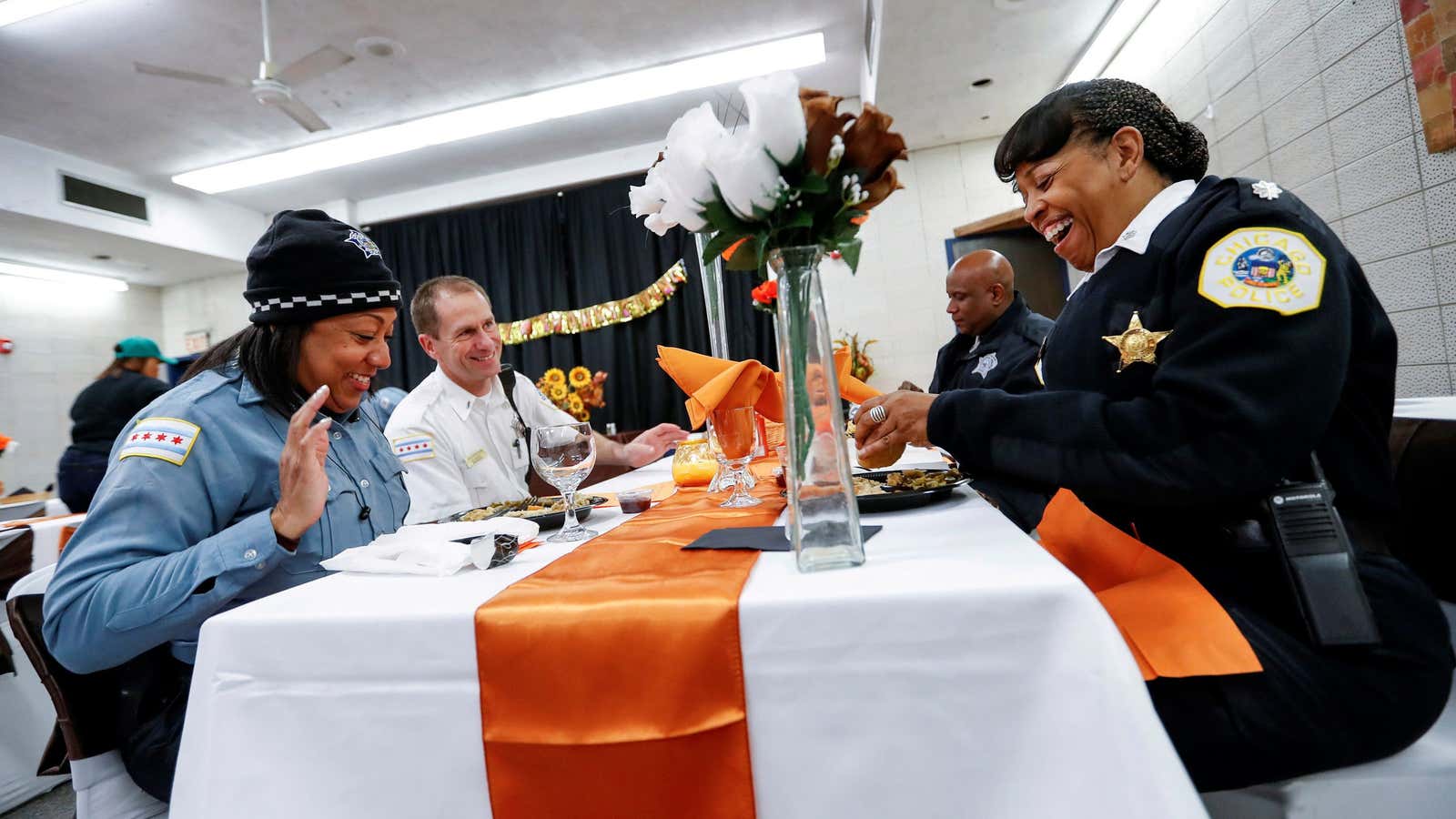In a climate of exacerbated partisanship, as in the US in recent years, discussing politics can be stressful. Add your family to it, and it can grow to an actual nightmare: That’s why the dread of political conversations at the Thanksgiving dinner table became so widespread that it generated a whole internet literature genre on how to handle such interactions (to which, of course, this article belongs). Political tension can escalate so intensely one might be tempted to treat it as a true conflict—so what better way to handle it than to borrow the strategy of a diplomat who has worked in such places as Iraq and Israel?
Enter Sri Preston Kulkarni, a former diplomat who just ran for Congress in Texas in the 2018 US midterm elections. Two years ago, when he was studying for a masters in public administration at Harvard, Kulkarni came up with a way to discuss politics in the very tense climate of the 2016 election.
Realizing that his conservative friends were what he calls an “ideological minority” in Harvard’s liberal environment, Kulkarni tried to convince them to speak to the rest of his graduate class; they agreed, but instead of having an open discussion format, as it was typical for the class, they opted for a written Q&A: Students would submit questions for others to reply to, rather than ask them in a free-flowing conversation, which had more risk of escalating into a heated debate. Eventually, Kulkarni told Quartz, the conversation moved away from issues, and towards what it meant, and felt like, to be a conservative. It was an encouraging moment of mutual understanding, but Kulkarni says it didn’t feel enough to consider the mediation done.
“I started asking [my conservative friends] if they’d be willing to get together for a meal,” he told Quartz. He envisioned the meeting, which he nicknamed “Breaking Bread,” as an open, polite discussion, away from the rude and aggressive tones of social media. In order to ensure that, he said, “we settled on a format that was more like marriage counseling.” It consists of simple steps that can easily be replicated at any American dinner table this coming Thursday–or anytime tense topics arise among family or friends.
Step 1: Present a concern
A person opens the conversation about a sensitive subject by saying how they feel about it. Since the statement is framed around the way one feels, and that can’t be debated, the next person cannot disagree with it.
Step 2: Restate
Following the statement, someone who feels differently about the matter has to repeat it in their own words. “No ‘yes, but…,'” said Kulkarni, “they just have to reiterate what [the previous person] said.” Typically, he says, it results in a bit of a caricature of the first person’s idea, which reflects the preconceived notions of the second person.
Step 3: Check
It’s the first person’s turn to say whether the reformulation sounds correct, or is a mischaracterization of what they said. This typically allows the person to go deeper not only into how they feel, but also why they feel so.
Step 4: Correct
If needed, the statement is reformulated, and then checked again, then honed until the person who spoke first has the feeling that the other is accurately reporting their statement.
Step 5: Open to the group
At this point, others can join the conversation, and the concern is discussed. However, the aim isn’t to debate the other, belittle their concerns, or convince them that they are wrong. The main goal is to listen, Kulkarni explains: “You get a lot better at listening [by talking] to people who disagree with you without replying.” He says people are able to see things from the other’s perspective, even without giving up their own narrative. “A lot of people think other people have bad values,” but once they step away from preconceived labels and stereotypes, “the concerns are actually pretty universal.”
